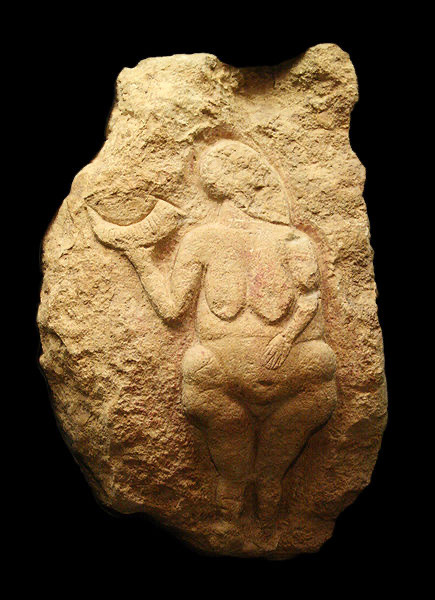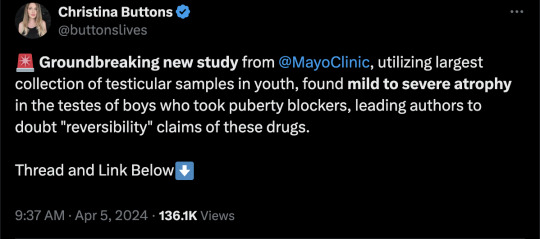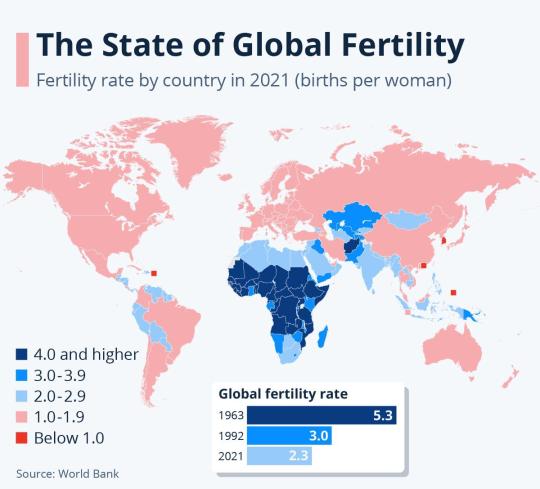#fertility
Text



Amazing torpedos bellies
#preggo kink#preggophilia#pregnancy#pregnant#fertility#big pregnant belly#huge pregnant belly#heavily pregnant#round pregnant belly#pregnant torpedo belly#torpedo
439 notes
·
View notes
Text
"we like young women because biologically, that means they're fertile"
then why do you find periods disgusting? those are the single most indicative sign of fertility. by that logic, you must be incredibly attracted to a women who speaks openly about her period, right?
#radical feminists please touch#radical feminists do interact#radblr#bisexual#bi#transmedical#transmed#listen to trans women#misogynist#fertility#periods#menstruation#menstruation health#menstrual health#menstrual cycle#men are stupid#terfblr#radical feminism#transgender#gender critical#terfsafe#feminism
2K notes
·
View notes
Text

The Venus of Laussel
Limestone
c. 23,000 BCE
Discovered 1911, Marquay, Dordogne, France
#Venus of Laussel#ancient art#ancient cultures#ancient civilizations#venus#fertility#goddess#french art#french history#art history#aesthetictumblr#tumblraesthetic#tumblrpic#tumblrpictures#tumblr art#aesthetic#beauty#tumblrstyle
644 notes
·
View notes
Text
I can’t update for a week or two. I really tried, but my IVF drugs are really interacting intensely with my brain and my body and all I can do is keep up with my self injections each day and suppress panic attacks by constantly distracting myself.
Good news is that, despite the fact that I constantly feel like a cat that has fallen into a bathtub of ice water and fire, the treatment is working (a little TOO WELL) so far and hopefully the egg retrieval surgery will happen a little sooner than expected and produce a big enough clutch of eggs that I NEVER have to do this again. 🙏🙏🙏🍀🍀🍀
Other Good news is that now I’m no longer terrified of needles. Now I’m just moderately frightened. That’s legit a win and I’m proud of that.😎😎😎😎💪
So in conclusion I HATE FEELING EVERY FEELING AT ONCE SO HARD I feel absolutely out of my freaking mind and I’m in pain and swollen and and I’m constantly freaking out and omg I can’t wait to get OFF this ‘journey’.
It’s ok to laugh at me because honestly i feel like this is so terrible it’s hilarious and laughing about it actually makes me feel better about it.
Love you all so much! Thank you all for your kindness🩷

#IVF#medical stuff#needle#injections#fertility#please feel free to request other trigger warning tags#trigger warning
1K notes
·
View notes
Text
Essential Feminist Texts Booklist
The Second Sex by Simone de Beauvoir
A Vindication of The Rights of Women by Mary Wollstonecraft
Feminist Theory: From Margin to Center by Bell Hooks
Feminism is For Everybody: Passionate Politics by Bell Hooks
The Dialectic of Sex: The Case for Feminist Revolution by Shulamith Firestone
Sexual Politics by Kate Millett
Full Frontal Feminism by Jessica Valenti
Women Who Run With the Wolves: Myths and Stories of the Wild Woman Archetype by Clarissa Pinkola Estes
The Creation of Patriarchy by Gerda Lerner
Yes Means Yes!: Visions of Female Sexual Power and a World Without Rape by Jessica Valenti
Invisible Women: Data Bias in a World Designed for Men by Caroline Criado Perez
Bad Feminist by Roxanne Gay
The Color Purple by Alice Walker
Hood Feminism: Notes from the Women That a Movement Forgot by Mikki Kendall
Men Explain Things To Me by Rebecca Solnit
The Female Gaze: Essential Movies Made by Women by Alicia Malone
Girlhood by Melissa Febos
The Story of Art Without Men by Katy Hessel
Is This Normal?: Judgment-Free Straight Talk about Your Body by Dr. Jolene Brighten
Come As You Are: Revised and Updated: The Surprising New Science That Will Transform Your Sex Life by Emily Nagoski, Ph.D
The Menopause Manifesto: Own Your Health with Facts and Feminism by Dr. Jennifer Gunter
The Pain Gap: How Sexism and Racism in Healthcare Kill Women by Anushay Hossain
Unwell Women: Misdiagnosis and Myth in a Man-Made World by Elinor Cleghorn
The Turnaway Study: The Cost of Denying Women Access to Abortion by Diana Greene Foster, Ph.D
Regretting Motherhood: A Study by Orna Donath
#intersectional feminism#feminism#feminist#simone de beauvoir#alice walker#women's health#women empowerment#womens rights#intersectionality#social justice#patriarchy#purity culture#female gaze#female excellence#female power#fertility#libido#female writers#it girl#femme fatale#female sexuality#female reader#women in art#women in history#the feminine urge#high value mindset#dream girl#queen energy#dark feminine energy#high value woman
3K notes
·
View notes
Text

Nature God Thor ⚡️
Uncensored version and a sketch page of his devoted priest Loki are on my Patreon for all members now 😌
160 notes
·
View notes
Text


By: Christina Buttons
Published: Apr 4, 2024

[ Figure 2: Representative images of Hematoxylin and Eosin-stained sections of testicular tissue biopsied from the testis from GD patients (A) with and (B) without PB exposure. ]
In a groundbreaking study from the Mayo Clinic, a globally recognized leader in medical research and patient care, researchers examined the effects of puberty blockers on testicular development in gender dysphoric male children. Their investigation revealed evidence of mild to severe atrophy in the sex glands of these children, leading the authors to express doubt in the claims of “reversibility” often made about puberty blockers.
The authors assert, “We provide unprecedented histological evidence revealing detrimental pediatric testicular sex gland responses to [puberty blockers].”
This preprint study, not yet peer-reviewed, presents evidence that puberty blockers induce significant cellular changes, impacting testicular development and sperm production in ways that are not fully reversible, with potentially permanent effects on testicular function and fertility. It challenges the longstanding view of puberty blockers as a reversible "pause button" on puberty.
As noted by the researchers of this study, no long-term studies exist for the use of puberty blockers in the context of stopping puberty for gender dysphoric children, and many potential health consequences remain unknown. In particular, the long-term impact on reproductive health is uncertain, making this study critical for filling this knowledge gap.
To address these unknowns, the Mayo Clinic has established the largest collection of testicular samples for patients aged 0-17 years, including those with gender dysphoria who have and have not yet received puberty blocker treatment, creating a database of over 130,000 individual cells for analysis.
Using a novel approach, the research team meticulously analyzed testicular tissue samples from youths undergoing puberty blocker treatment, with those not on puberty blocker treatment serving as controls. This comparison provides important insights into the potential cellular and molecular changes induced by these drugs.
Key Findings
The study utilized the Mayo Clinic's Pediatric Testicular Biobank for Fertility Preservation, which has been recruiting patients primarily from pediatric urology departments since 2015. Researchers analyzed testicular specimens from 87 young individuals (ages 0-17) undergoing fertility preservation surgery for various health reasons. Among these, 16 were gender dysphoric boys between the ages of 10 and 16, all of whom began identifying as transgender girls between the ages of 2 and 15. At the time of surgery, 9 patients (56%) were already on puberty blockers, with exposure ranging from 3 to 52 months. The authors noted that 100% of the 16 children would eventually go on to take them, highlighting “the widespread nature of PB intervention in this demographic.”
Among nine patients treated with puberty blockers, two exhibited unusual features in their testicles upon physical examination. One patient had abnormalities in both testicles, including incomplete development of the tunica albuginea, which is a protective covering around the testicles. The other patient had a right testicle that was difficult to detect.
In one part of the tissue-level analysis, over 400 testicular biopsy samples were analyzed and stained to examine the differences between those treated with puberty blockers and those who were not. Comparisons showed that testicular development in those treated with puberty blockers was abnormal compared to non-treated individuals. There was variability in how individuals responded to puberty blockers, leading to different outcomes in testicular development, including the degeneration of testicular tissues.
The study authors presented a case of a 12-year-old patient who underwent treatment with puberty blockers for 14 months. In this individual, 59% of the sex glands showed complete atrophy, along with the presence of microlithiasis—a condition where small clusters of calcium form in the testicles. This insight suggests that puberty blockers could lead to lasting structural changes. Additionally, research has shown a link between testicular microlithiasis and testicular cancer.

[ D) Representative images of normal (top) and fully atrophied sex gland (bottom). ]
This study also utilized single-cell analysis to investigate the effects of puberty blockers and aging on testicular cell composition. It took a very detailed look at individual cells from the testicles of a 14-year-old who had been on puberty blockers for over 4 years. The study analyzed a total of 130,100 cells, including 11,199 cells from the juvenile puberty blocker-treated patient.
The study observed that over 90% of the cells responsible for sperm production in this patient were stunted at an early developmental stage, unable to progress further. Additionally, it found "pathologically" higher and lower levels of two types of support cells (Sertoli cells) necessary for healthy sperm development. These findings suggest that puberty blockers can disrupt the normal maturation process of cells critical for sperm production.
In another part of the analysis, the authors found distinct cell-specific changes, including altered expression patterns of puberty-associated genes in endothelial cells, due to puberty blocker treatment. The authors believe that these drugs might induce juvenile testicular atrophy in part by disrupting the normal function of testicular endothelial cells.
Another aspect of the study focused on examining the effects of puberty blockers on the genetic activity of early-stage sperm cells, revealing significant changes that could potentially influence their development and fertility. By analyzing the activity of specific genes within these cells, the researchers found that puberty blockers may have caused alterations in gene expression, affecting processes crucial for the normal growth and function of these cells. This analysis suggests that the use of puberty blockers in gender dysphoric youth could have lasting implications for their reproductive health, particularly by impacting the ability of these early-stage sperm cells to mature properly.
Study Impact
Puberty blockers are increasingly used as a treatment for gender dysphoric youth to halt the development of secondary sex characteristics, such as breast development and widening of hips in females, or the growth of facial hair and deepening of the voice in males. Thousands of children in the United States are placed on this medical pathway as part of the gender-affirming model of care, under the presumption that these drugs are safe and fully reversible.
However, many aspects of the long-term consequences of puberty blockers, which have been administered to children off-label in an experimental manner, remain unknown. This study contributes valuable insights into the potential irreversible harm these treatments can cause to bodily and reproductive functions.
Arguably, the most critical finding is the evidence of mild to severe sex gland atrophy in children treated with puberty blockers. This atrophy signifies potential damage or impairment to the structures essential for sperm production, raising serious concerns about the long-term fertility impacts of these drugs for these individuals.
Given the Mayo Clinic's esteemed reputation in the medical and research communities, should the study pass peer review without any issues, its findings will carry significant weight.
Broader Implications
Puberty blockers belong to a group of synthetic gonadotropin-releasing hormone (GnRH) analogues. These drugs act on the pituitary gland to hinder the release of chemical signals that typically trigger the production of estrogen and testosterone. Historically GnRH analogues were used to treat conditions such as prostate cancer, fibroids, and endometriosis and, in some cases, as a measure to chemically castrate sex offenders.
In children, puberty blockers prevent the natural changes of puberty driven by sex hormones and have been used to treat central precocious puberty, a condition where a child begins to sexually mature much earlier than usual. In gender dysphoria, puberty blockers are administered experimentally, lacking long-term testing.
Notably, the U.S. Food and Drug Administration (FDA) has not approved puberty blockers and sex hormones for use in pediatric gender care. No clinical trials have substantiated the safety of these drugs for such non-approved applications and manufacturers of puberty blockers have repeatedly declined to conduct safety trials for their use on this cohort.
While puberty-blocking drugs are often promoted as “safe,” "reversible" and a "pause button" on puberty, these characterizations seem to stem from their approved use for treating central precocious puberty in younger children, not their burgeoning off-label use for managing gender dysphoria in adolescents.
Past studies have indicated possible negative effects on bone density and brain health. There is also a concern that these drugs might solidify gender dysphoria in adolescents, potentially leading them down a lifelong road of biomedical interventions. Following reports in 2016 of suicidal ideation in children administered puberty blockers, the FDA instructed drug manufacturers to include a warning about potential psychiatric issues on the drugs' labels.
Puberty blockers are increasingly administered to adolescents at Tanner Stage 2, the first signs of puberty. Research shows administering puberty blockers at this stage, followed by cross-sex hormones, may result in infertility, sterility, and sexual dysfunction. Furthermore, they inhibit the development of mature male genitalia, making it difficult to create a pseudovagina in the event of a later vaginoplasty due to a lack of sufficient tissue.
The National Health Service England recently announced it would no longer prescribe puberty blockers to youth outside of research settings and closed down its only national clinical service for pediatric gender medicine, following a review that deemed the service "not safe.”
Several European countries, including Sweden, Finland, the UK, Denmark, and Norway have updated their guidelines for youth transition to align with systematic evidence reviews, the gold standard in evidence-based medicine. These reviews concluded that the risks associated with youth transition outweigh any purported benefits. Consequently, these countries have implemented restrictions on medical interventions, prioritizing psychotherapy as a first-line response for minors experiencing gender-related distress.
==
They're sterilizing boys and giving them cancer. When "god" does it, we call him evil. When humans do it, we call it "gender affirming care."
#Christina Buttons#puberty blockers#atrophy#medical scandal#medical malpractice#medical corruption#sterilization#fertility#irreversible#gender affirming care#gender affirming healthcare#gender affirmation#queer theory#gender ideology#gender identity ideology#intersectional feminism#religion is a mental illness
231 notes
·
View notes
Photo

Fertility rate by country in 2021
245 notes
·
View notes
Text

#preggo kink#preggophilia#pregnancy#pregnant#fertility#big pregnant belly#huge pregnant belly#heavily pregnant#round pregnant belly
152 notes
·
View notes
Text

Lotus-Headed Fertility Goddess Lajja Gauri
India (Madhya Pradesh)
ca. 6th century
Metropolitan Museum of Art
#fertility#goddess#fertility art#india#art of india#religious art#indian culture#indian art#ancient art#ancient cultures#stone carving#art history#aesthetictumblr#tumblraesthetic#tumblrpic#tumblrpictures#tumblr art#aesthetic#beauty#tumblrstyle
242 notes
·
View notes
Text



Women reduced to baby making ovens. Babies reduced to shopping orders. And they call this progress.
Thanks for the judge though.


These fucking men I swear.

#Surrogacy#surrogate mothers#surrogate babies#lgbtq+#gays#same sex#fertility#california#ivf#in vitro fertilisation#children#progress#women#women's rights#feminism#feminist#terfs
92 notes
·
View notes
Text
holistic womb healing tip:
aim to keep your womb warm by avoiding or limiting the amount of cold you put into your body and replacing it with warm foods + liquids. this increases blood flow to the uterus and aids in fertility! even if you're not trying to get pregnant, on a spiritual level, having a fertile womb allows you to naturally magnetize the things that you want in life with ease.

#daportalpractitioner#holistic health#womb healing#womb health#cycle syncing#womb#menstrual cycle#uterus#menstrual health#womens health#ayurvedic#chinese medicine#astroblr#spirituality#fertility#divine feminine#divine feminine energy#goddess
196 notes
·
View notes
Text

THIS IS REAL?!?!?!
115 notes
·
View notes
Text
Rice In Witchcraft
Rice in witchcraft is known for it's properties of Prosperity, Wealth, Protection, and Fertility. You can add rice to your spell jars, placing it around your house, or to carrying it with you.
Other uses for Rice:
Burying stones and other items to cleanse and charge them
To represent the Air Element
Using rice in your food to bring your intentions to those who eat it.
Use as a base for money bowls to attract wealth in your life
Keeping rice near your door to ward off negative energy
Using rice as offerings to deities, especially ones associated with agriculture.
#witchcraft#rice#paganism#kitchen witch#prosperity#protection#witchblr#cleansing#fertility#kitchen magic#spell jars#offerings#money bowls
2K notes
·
View notes





